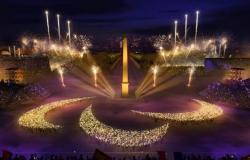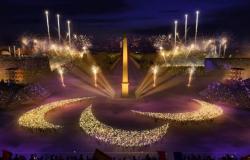
LThe lighting of the Paris 2024 Olympic and Paralympic cauldron captivated spectators and television viewers during the opening ceremony on July 26. It is therefore not insignificant that voices are now suggesting that this flame ring, topped with a monumental balloon filled with helium, designed by designer Mathieu Lehanneur, be perpetuated.
Exceptional and ephemeral, like the Games, does this cauldron deserve to be preserved by the State in the Tuileries Gardens? The question is not without interest since cultural heritage covers all traces of human activities that a society considers essential for its identity and collective memory, and that it wishes to preserve in order to pass them on to future generations.
However, it is the capacity of the French State to maintain – over time – this floating creation that must guide its conservation so that it does not drift towards an inevitable degradation, like the damage done to Daniel Buren’s “columns” at the Palais-Royal. The responsibility of the State is the keystone to the extent that heritage is recognized by the fact that its loss constitutes a sacrifice and that its conservation requires efforts, as historians André Chastel and Jean-Pierre Babelon have demonstrated.
It is still necessary to know where to keep the basin since the Tuileries garden is the subject of particular heritage attention: classification as a historic monument (1888, 1889 and 1914), registration as a site (1975), registration as a UNESCO World Heritage Site (1991), national domain (2017) and remarkable garden (2019). Also, the heritage and town planning codes contain more or less strong provisions for carrying out ground clearance work in this protected area.
Read also | The Olympic cauldron will return to the Parisian sky for the Paralympic Games from August 29
Add to your selections
However, despite the architectural effort in which it is part, one could consider that the basin risks damaging the character of the place or the monumental perspective of the “royal way” which goes from the Louvre to La Défense, passing by the Place de la Concorde and the Arc de Triomphe.
However, the opinions of heritage commissions are not always followed, as shown by the case of the contemporary stained glass windows for Notre-Dame de Paris. Nothing is ever a foregone conclusion, as demonstrated by the validation of the work on Daniel Buren’s “columns” in the (listed) Cour d’honneur of the Palais-Royal by the Council of State in 1992. Beyond that, would this project not be an “artistic creation” or a “development project” that derogates from the non-constructibility of this national domain?
You have 45.17% of this article left to read. The rest is reserved for subscribers.





